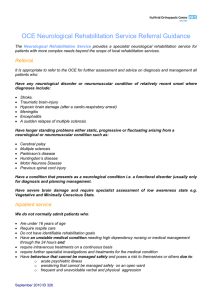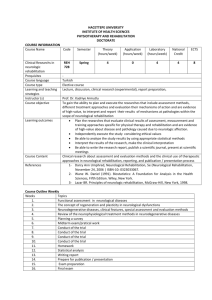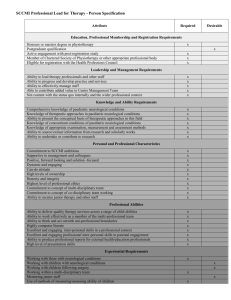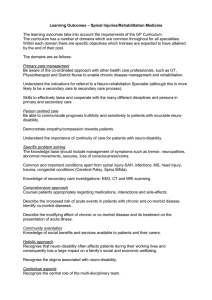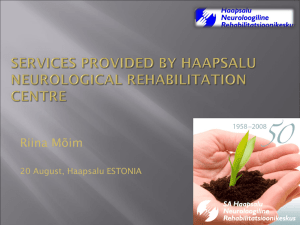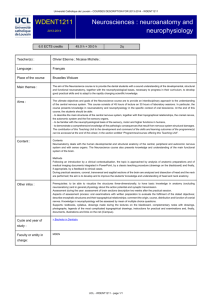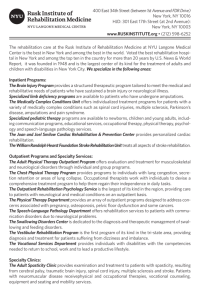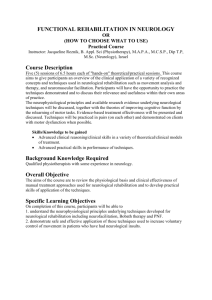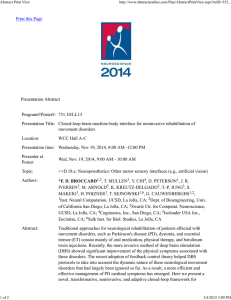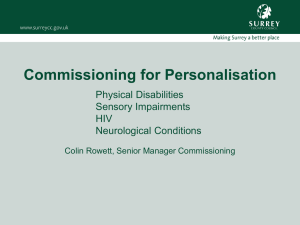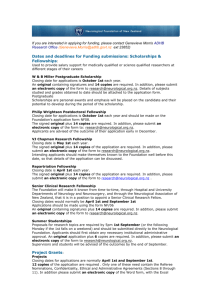SYLLABUS CARROLL COMMUNITY COLLEGE DIVISION OF
advertisement
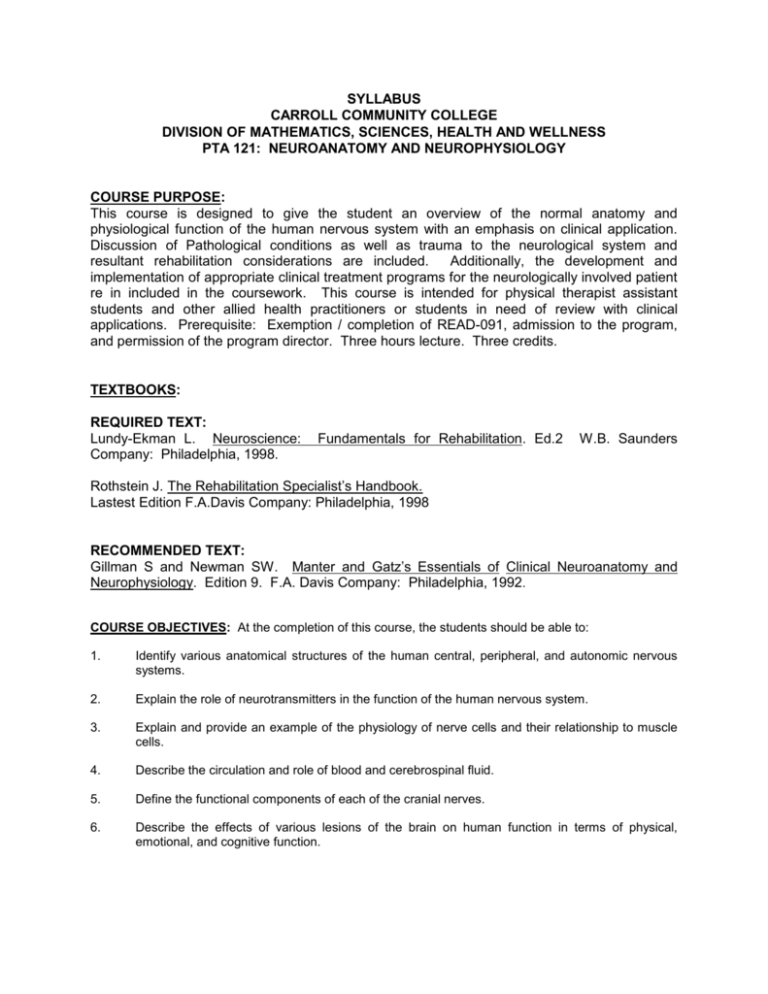
SYLLABUS CARROLL COMMUNITY COLLEGE DIVISION OF MATHEMATICS, SCIENCES, HEALTH AND WELLNESS PTA 121: NEUROANATOMY AND NEUROPHYSIOLOGY COURSE PURPOSE: This course is designed to give the student an overview of the normal anatomy and physiological function of the human nervous system with an emphasis on clinical application. Discussion of Pathological conditions as well as trauma to the neurological system and resultant rehabilitation considerations are included. Additionally, the development and implementation of appropriate clinical treatment programs for the neurologically involved patient re in included in the coursework. This course is intended for physical therapist assistant students and other allied health practitioners or students in need of review with clinical applications. Prerequisite: Exemption / completion of READ-091, admission to the program, and permission of the program director. Three hours lecture. Three credits. TEXTBOOKS: REQUIRED TEXT: Lundy-Ekman L. Neuroscience: Company: Philadelphia, 1998. Fundamentals for Rehabilitation. Ed.2 W.B. Saunders Rothstein J. The Rehabilitation Specialist’s Handbook. Lastest Edition F.A.Davis Company: Philadelphia, 1998 RECOMMENDED TEXT: Gillman S and Newman SW. Manter and Gatz’s Essentials of Clinical Neuroanatomy and Neurophysiology. Edition 9. F.A. Davis Company: Philadelphia, 1992. COURSE OBJECTIVES: At the completion of this course, the students should be able to: 1. Identify various anatomical structures of the human central, peripheral, and autonomic nervous systems. 2. Explain the role of neurotransmitters in the function of the human nervous system. 3. Explain and provide an example of the physiology of nerve cells and their relationship to muscle cells. 4. Describe the circulation and role of blood and cerebrospinal fluid. 5. Define the functional components of each of the cranial nerves. 6. Describe the effects of various lesions of the brain on human function in terms of physical, emotional, and cognitive function. 7. Identify and describe the location and function of the ascending and descending neural pathways. 8. Describe the effects of various lesions of the peripheral nerves, spinal roots, and spinal cord on human function in terms of physical, emotional, and cognitive function. 9. Demonstrate proficient use of the internet for research and group presentation purposes. 10. Discuss and illustrate clinical manifestations of particular neurological pathologies. 11. Develop clinically appropriate programs of progressive treatment for neurological patients. 12. Describe the evaluation of expectation of function based on neurological involvement including goals. 13. Explain various approaches to vestibular rehabilitation. 14. Explain differences between traumatic, degenerative, and perinatal neurological diagnoses and implications for treatment. 15. Recognize changes in the direction and magnitude of the patient’s state of arousal , mentation and cognition. 16. Recognize activities, positioning, and postures that aggravate or relieve pain or altered sensations. Also be familiar with sensation testing procedures and common results. 17. Recognize and Discuss righting and equilibrium reactions. 18. Recognize and discuss Normal and Abnormal Muscle tone 19. Recognize and be familiar with mental status testing and results.
